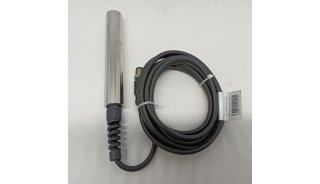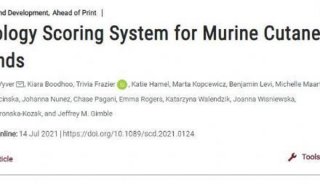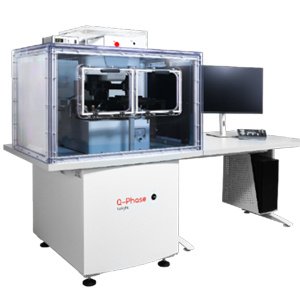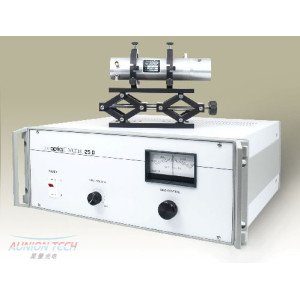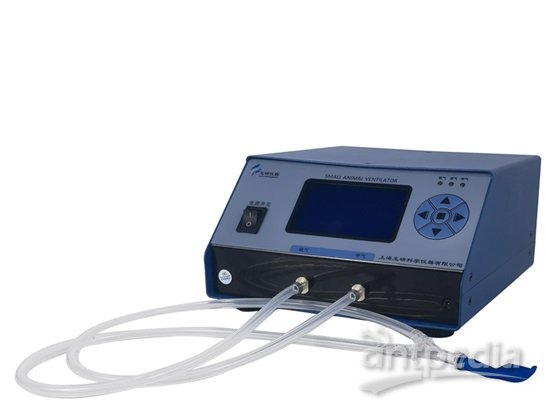Multicolour 3D-FISH in vertebrate cells-5
Author Notes
After the fourth round of DOP amplification the probe quality is considerably reduced.
Use the low stringency cycles only in case you start with genomic DNA. For all re-amplifications omit low stringency cycles and use only high stringency cycles.
In case of the simultaneous labeling of several probes (chromosome specific painting probes) with the same hapten or fluorochrome allow 1µl of unlabeled amplification product from each probe (approx. 50-100ng) and reduce the volume of the mastermix accordingly. This works well for up to several probes.
In case of the direct labeling using a fluorochrome bound to dUTP, such as TAMRA-dUTP, FITC-dUTP, TexasRed-dUTP we recommend to increase the concentration to 60µM.
The primer DOP1 described in this paper resulted in a poor amplification in our hands, therefore we skipped the DOP1 primer.
This approach allows the use of one MM also for very low DNA concentrations of a BAC or for the simultaneous amplification of several BACs by adjusting the amount of DNA (up to 15µl) and water in the individual reaction.
In case you prefer a smaller fragment size (approx. 0.3-0.6kb, which might reduce background for some probes) we suggest a short digestion with DNase I as follows:
Amount Reagent
48µl Labeled PCR product
10µl Nicktranslation buffer (see protocol nicktranslation)
40µl H2O
2µl DNase I (1:250 diluted in ice cold water (see nick-translation section))
Incubate 8 minutes at room temperature, stop reaction by adding 1µl EDTA (0.5M)It is possible and reasonable to generate complex probe sets e.g. BAC-pools containing DNA from up to 20 single BAC-clones (and possibly more) per label reaction. In order to label simultaneously multiple BAC-DNAs within one label reaction we found the following protocol easy to handle and efficient. Prepare a pre-pool of each primary DOP2 and DOP3 amplified BAC-DNAs containing approximately equal amounts of amplified DNA from each BAC (in our hands pre-pools containing DNA from up to 20 BACs worked well). For pools of up to 5 BACs use 1µl in the labeling reaction, for those of up to 10 BACs use 2µl and for more than 10 BACs in the pool use 3µl of the pooled DNA for a labeling reaction.
The minimum probe-size reproducibly be labeled and hybridized was 4.5kb. For highly DNaseI sensitive DNA-constructs the labeling-protocol is slightly adapted as follow: the DNaseI has to be diluted 3-5 times more than usually and the incubation time only lasts 45 minutes.
Add EDTA only after you have reached the desired fragment size.
The activity of DNaseI seems to be variable and may also depend on the DNA. Therefore the amount of DNaseI added and/or duration of incubation time has to be titrated in order to obtain the appropriate size of DNA fragments.
Some cell types require longer incubation in 0.1N HCl (10 minutes) or (after 5 minutes of HCl) an additional incubation in pepsin after the fixation. Digestion with pepsin should be monitored under the microscope because it is easy to over-digest the sample which results in loosing cells or disturbing nuclear morphology. Fixed cells can be kept in 50% FA/2xSSC (at 4°C) for several months. However, long storage often results in a deterioration of the nuclear morphology after denaturation.
Growing cells on small cover slips (e.g. 15x15mm) has the advantage that they can directly placed on a microscopic slide for hybridization.
Seeding cells on small cover slips (e.g. 15x15mm) has the advantage that they can be directly placed on a microscopic slide for the hybridization set-up.
Cot-1 DNA can reduce the intensity of hybridization signal of highly repetitive sequences. This can be compensated by using higher amounts of repetitive probes.
Probes containing segments with incomplete sequence homology may require higher concentrations of formamide (e.g. 70%) in the hybridization mix in order to reduce unspecific hybridization. As an example, cross hybridization on different chromosomes of centromeric probes that essentially bind to one chromosome can be prevented by hybridization in 70% formamide.
All operations should be done quickly in order not to dry cells. Therefore we recommend to process slides one by one. Furthermore it is crucial to keep temperature and time for denaturation strictly as specified in the protocols. Too short denaturation results in poor hybridization, whereas over-denaturation damages the morphology of nuclei. We recommend incubating slides in a metallic box which is kept in a 37°C water bath. We also want to emphasize that 3D-FISH on tissue sections with a thickness > 10 µm and a best possible preservation of the nuclear and tissue morphology (note: most tissue FISH is done on very thin sections or disseminated nuclei) is not trivial and we are currently still improving our methods. We got good reproducible results for repetitive probes and directly labeled probes in paraffin sections, but found it difficult to detect hapten-labeled probes especially chromosome painting probes. Vibratome sections provide the best morphology and also good reproducible FISH results with the protocol provided, whereas cryo-sections provide good FISH results but are prone to lose their proper morphology.
Formamide is toxic, so all the steps that involve the use of this reagent should be performed in a hood and gloves should be worn.
In case of tissue sections washing steps should be extended to 10 minutes each and the antibody incubation has to be prolonged up to 2-3 hours. Furthermore the blocking solution (also used to dilute the antibodies) contains 4xSSC with 2% BSA, 0.1% Saponin and 0.1% TritonX100 and the washing solution after antibody incubation is 4xSSC 0.1/TritonX100.








